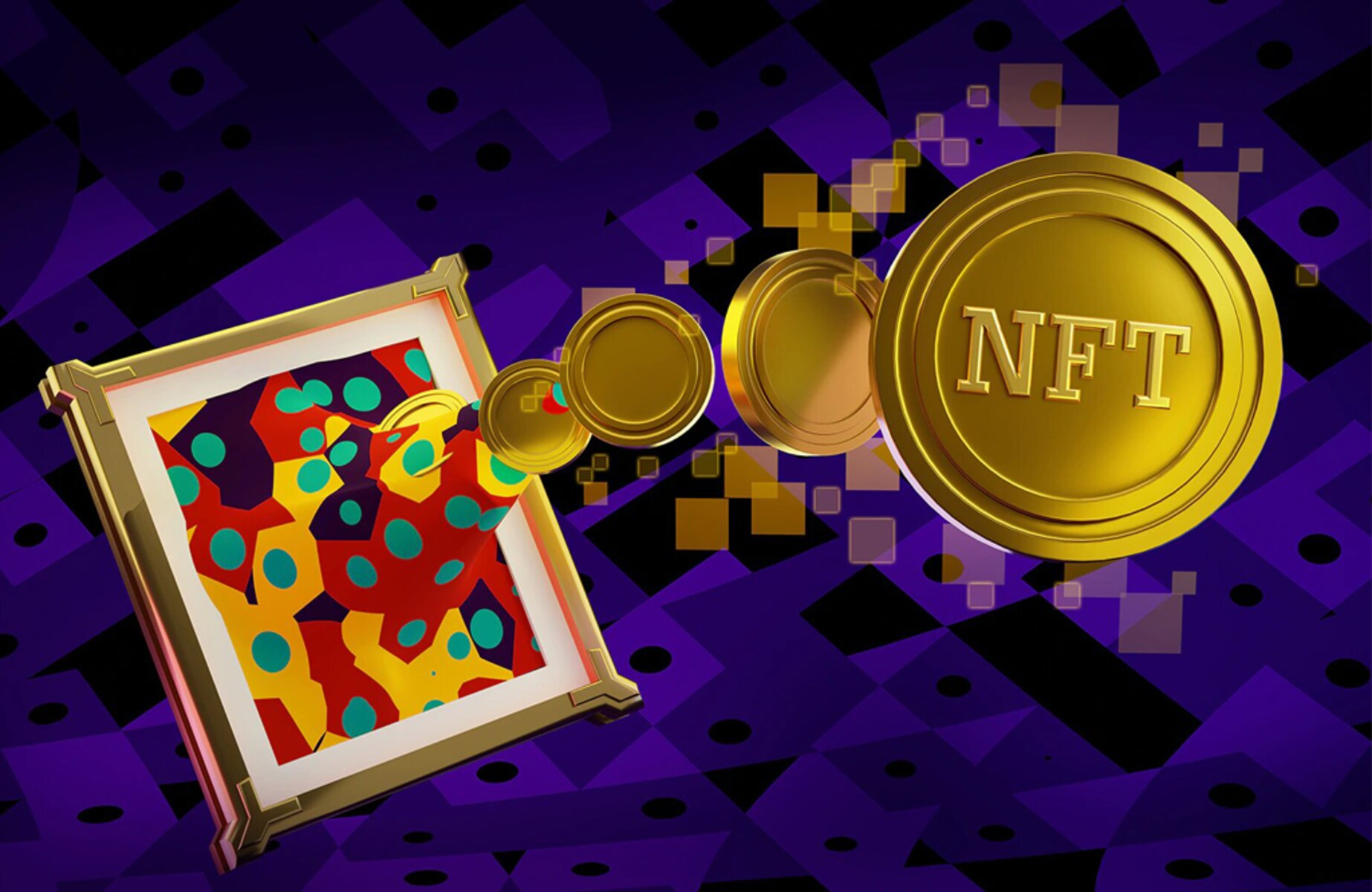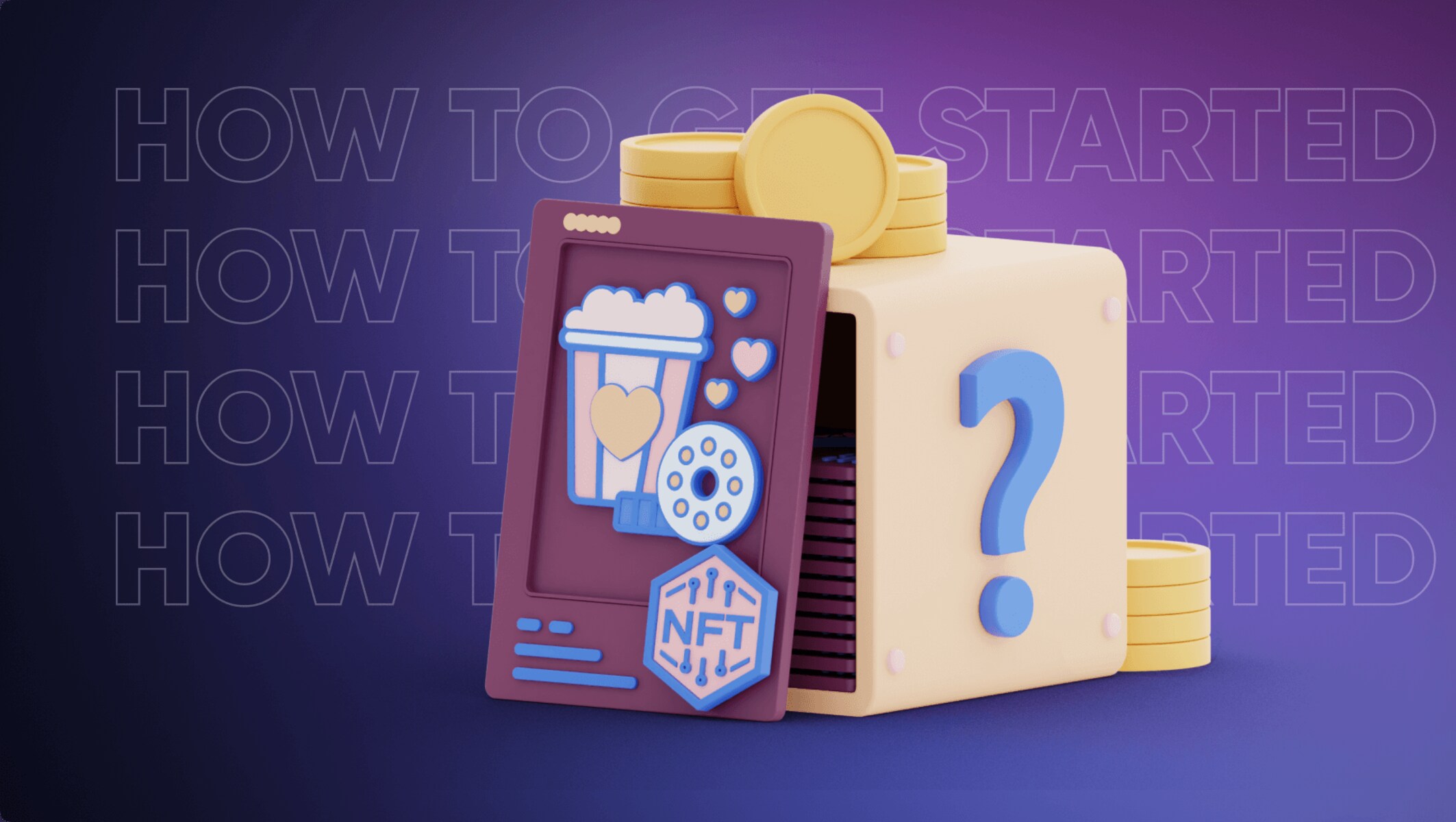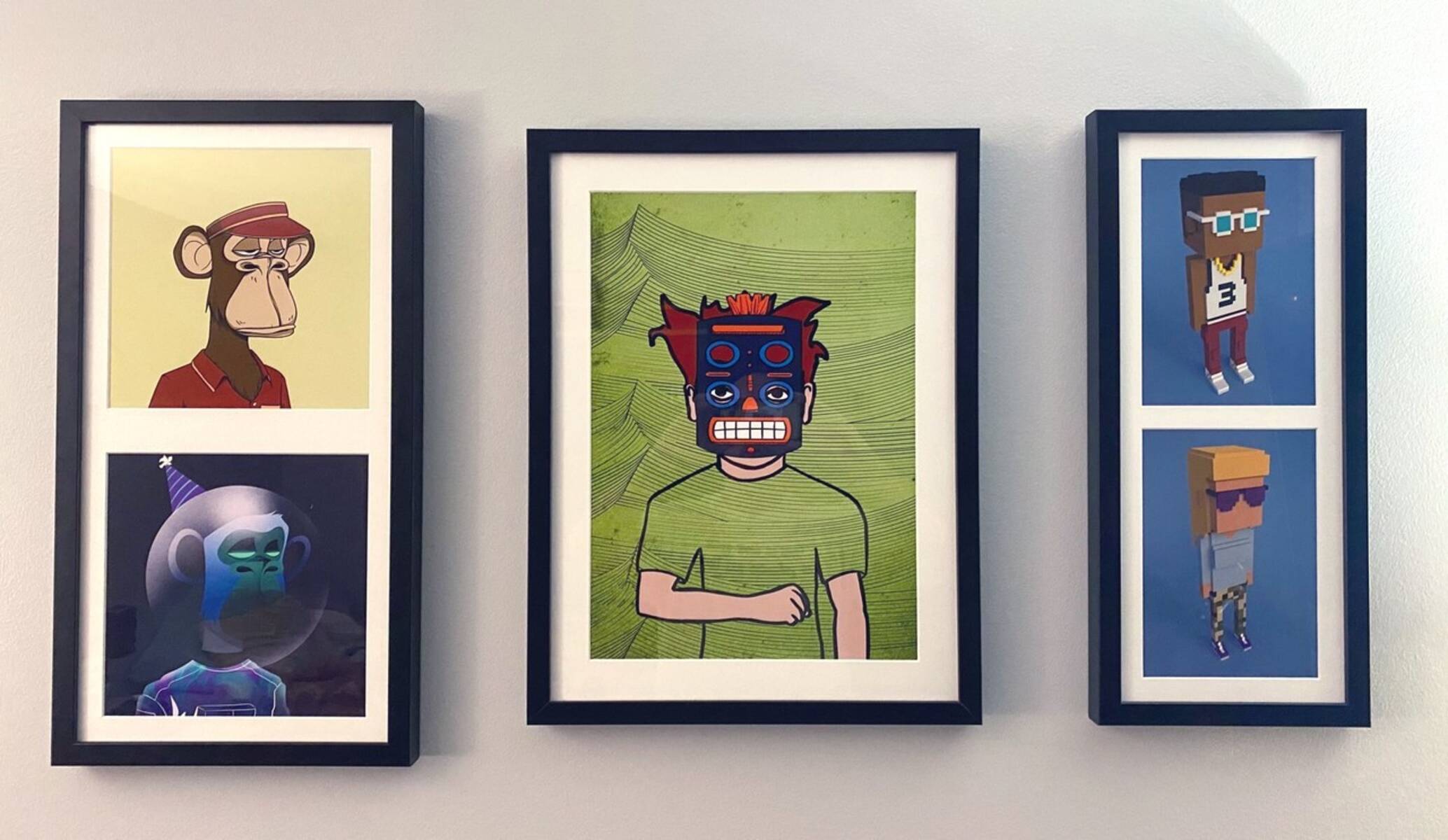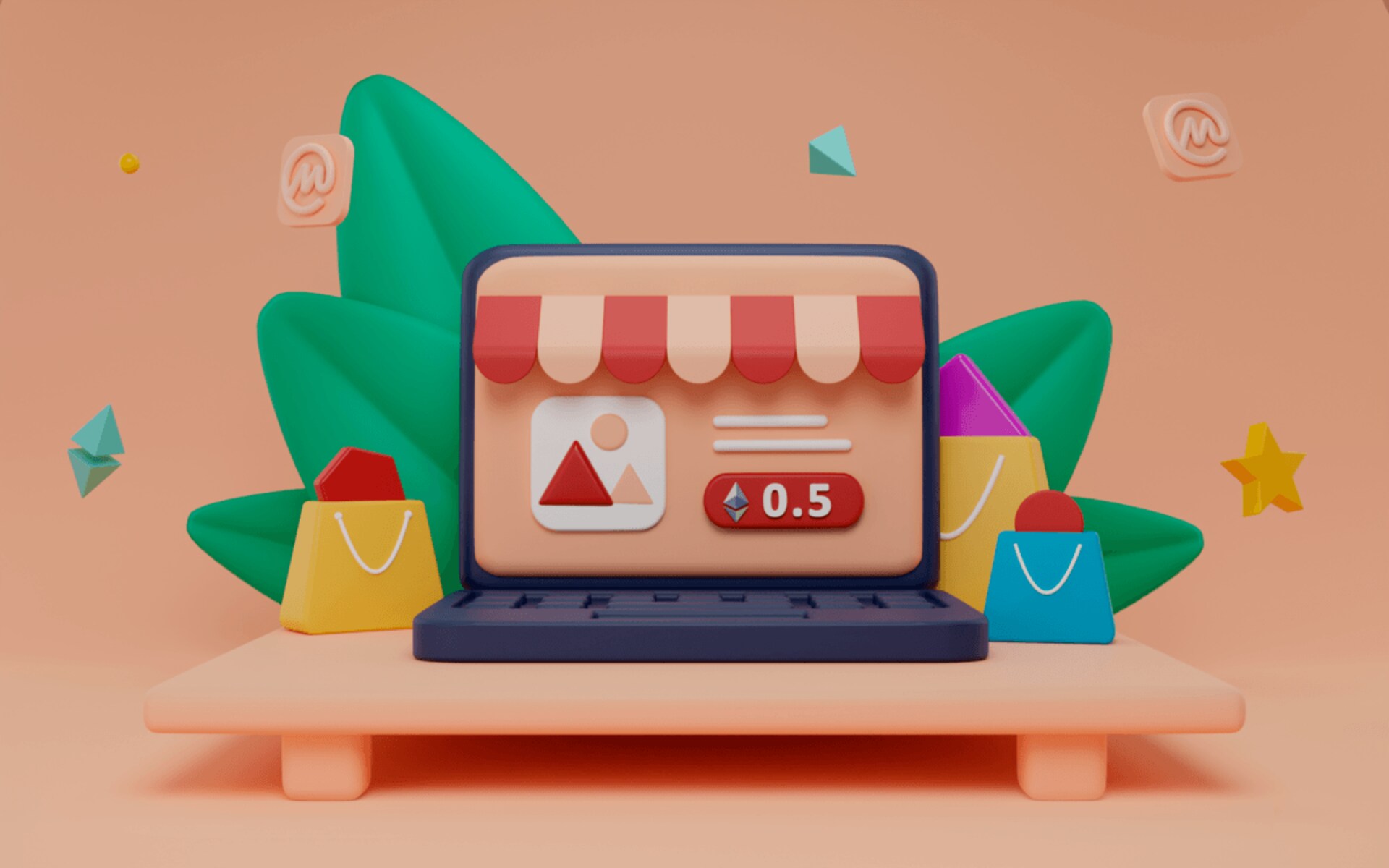Introduction
Welcome to the world of non-fungible tokens (NFTs), where digital assets are creating waves in the art, collectibles, and gaming industries. The concept of NFTs has gained significant attention and popularity, with artists, creators, and investors flocking to this new form of digital ownership. But as an NFT holder, you may find yourself wondering: How much is my NFT worth?
In this article, we will explore the various factors that determine the value of an NFT. From the scarcity and rarity of the asset to the artistic elements and creator reputation, numerous aspects contribute to the perceived worth of an NFT. Understanding these factors can help you gain insights into the value of your NFT and make informed decisions in the dynamic and rapidly evolving NFT market.
Whether you are a seasoned NFT collector or just starting your journey into the world of digital assets, knowing the factors that influence NFT value is crucial. It allows you to evaluate investments, determine fair prices, and grasp the potential for future growth or fluctuations in value.
So, buckle up and prepare to dive deep into the captivating realm of NFT valuation. Let’s explore the key elements that impact the worth of these unique and digital assets.
What is an NFT?
Before we delve into the factors that determine the value of an NFT, let’s first define what an NFT actually is. A non-fungible token (NFT) is a unique digital asset that represents ownership or proof of authenticity of a specific item or piece of content, such as artwork, music, videos, or virtual real estate, among others.
Unlike cryptocurrencies like Bitcoin or Ethereum, which are fungible and interchangeable, each NFT is distinct and cannot be replaced by another token. This uniqueness is made possible through blockchain technology, which ensures transparency, security, and immutability.
When you own an NFT, you have a digital certificate of ownership that is stored on the blockchain. This certificate verifies that you are the legitimate owner of the asset and provides proof of its scarcity and authenticity. NFTs have gained immense popularity due to their ability to revolutionize digital ownership, offering new possibilities for artists, creators, and collectors.
NFTs have not only captured the attention of the art world but have also found applications in various industries. They are being used in the gaming industry to create rare in-game items and characters, in the music industry to tokenize albums and exclusive access to events, and even in the real estate industry to tokenize virtual land in virtual worlds.
One of the key benefits of NFTs is their ability to empower artists and creators by providing them with new revenue streams and more control over their work. Through the sale of NFTs, artists can directly monetize their digital creations, reaching a global audience without the need for intermediaries.
While NFTs have garnered significant attention and investment, it is essential to note that they also raise questions about copyright, intellectual property, and environmental impact. The energy consumption associated with blockchain transactions has sparked debates about the sustainability of NFTs and their long-term implications.
Now that we have a basic understanding of what NFTs are, let’s explore the factors that contribute to their value in the next section.
Factors That Determine the Value of an NFT
When assessing the value of an NFT, several key factors come into play. Understanding these factors can help you make informed decisions about buying, selling, or holding onto your digital assets. Let’s explore the main elements that contribute to the value of an NFT:
1. Establishing Scarcity and Rarity: One of the primary drivers of NFT value is the scarcity or rarity of the asset. If an NFT is part of a limited edition or possesses unique characteristics, it tends to be more valuable. Scarcity can be determined by the number of editions available or by unique attributes within a collection.
2. Artistic and Creative Elements: The artistic quality and creative elements present within an NFT can significantly impact its value. Factors such as the aesthetic appeal, artistic skill, and innovation demonstrated by the creator can make an NFT more desirable to collectors.
3. Creator Reputation and Celebrity Status: The reputation and popularity of the creator behind an NFT can have a significant influence on its value. Established artists, celebrities, or influencers within the art or entertainment industry often command higher prices for their NFTs due to their established fan base and recognition.
4. Demand and Market Trends: Like any market, the demand for certain types of NFTs can influence their value. Market trends and shifts in buyer preferences can have a substantial impact on the perceived worth of an NFT. Factors such as cultural relevance, current events, and emerging artists can drive demand and increase value.
5. Historical Sales Data and Market Comparisons: Analyzing the historical sales data of similar NFTs can provide insights into their value. Comparisons with past sales of comparable assets can help establish a benchmark for the current market price.
6. Token Utility and Functionality: Some NFTs come with additional utility or functionality beyond ownership rights. NFTs that offer benefits such as access to special events, exclusive content, or enhanced gaming experiences can be more valuable due to the added utility they provide.
Remember, the value of an NFT can be subjective and can vary based on individual preferences and market dynamics. What may be valuable to one person may not hold the same significance for another.
Now that we have explored the factors that influence the value of an NFT, let’s proceed to the next section, where we will delve deeper into the intricacies of establishing scarcity and rarity in NFTs.
Establishing Scarcity and Rarity
Scarcity and rarity are crucial factors in determining the value of an NFT. The perception of exclusivity and limited availability can significantly impact the desirability and price of a digital asset. In this section, we will explore how scarcity and rarity are established within the world of NFTs.
1. Limited Editions: One common approach to create scarcity is by releasing NFTs as limited editions. Artists or creators may choose to mint only a certain number of copies of their work, such as 10, 100, or even just one. The lower the edition size, the higher the perceived scarcity and therefore the potential value.
2. Unique Attributes and Traits: Another way to establish rarity is by introducing unique attributes or traits within a collection. These attributes could range from specific color variations, special animations, or hidden elements in the artwork. NFTs with rare or exclusive traits are often more sought after by collectors, driving up their value.
3. Burn Mechanisms: Some NFT projects employ burn mechanisms, where a portion of the collection is intentionally destroyed or removed from circulation after a certain event or period. By reducing the supply of NFTs in this manner, scarcity is increased, potentially leading to higher value for the remaining assets.
4. Time-Limited Drops: Time-limited drops create a sense of urgency and exclusivity. The NFTs are only available for a short period, typically through a specific website or platform. Collectors who are quick to acquire these time-limited releases may benefit from the perception of rarity, as those who miss out must turn to the secondary market where prices may already be higher.
5. Collaborations and Limited Partnerships: Collaborative NFT projects involving multiple artists or brands can generate scarcity by combining the unique styles and followers of each contributor. Limited partnerships with established brands or celebrities can create rare NFTs that hold significant value due to their association with well-known names.
It’s important to note that while scarcity and rarity contribute to the value of an NFT, they are not the only factors to consider. The artistic quality, demand, and market trends also play significant roles in determining the overall worth of a digital asset.
Now that we have explored how scarcity and rarity are established within NFTs, let’s continue to the next section, where we will delve into the artistic and creative elements that impact an NFT’s value.
Artistic and Creative Elements
Artistic and creative elements play a pivotal role in determining the value of an NFT. While digital art can take on various forms, such as illustrations, animations, or generative art, the artistic quality, innovation, and uniqueness of the work can greatly impact its perceived worth. In this section, we will explore the key artistic and creative elements that contribute to the value of an NFT.
Aesthetic Appeal: The aesthetic appeal of an NFT is a subjective factor but can significantly influence its value. The composition, color palette, visual storytelling, and overall beauty of the artwork contribute to its desirability and collector demand. NFTs that captivate viewers and evoke emotional responses tend to attract higher prices in the market.
Artistic Skill and Technique: The level of technical skill and artistic technique displayed in the creation of the NFT can impact its perceived value. Artists who demonstrate mastery in their craft, whether through their ability to capture realistic details or their innovative use of digital tools, tend to command higher prices for their artworks.
Innovation and Uniqueness: NFTs that push the boundaries of traditional art forms or introduce new concepts and techniques often attract attention and higher valuations. Artists who experiment with cutting-edge technology, explore new artistic genres, or challenge established norms can create NFTs that stand out in the market and hold significant value due to their innovation and uniqueness.
Conceptual Depth and Narrative: NFTs that convey deeper meanings or tell compelling stories through their art can resonate with collectors on a more profound level. The ability of the artwork to evoke thought-provoking ideas, raise social or cultural commentary, or reflect personal experiences can enhance the value of an NFT.
Editioning and Series: Some artists release NFTs as part of a limited edition or a series. These collections can have interconnected themes or variations within a specific artistic style. The concept of a series can create value by enticing collectors to acquire multiple pieces, fostering a sense of completeness or exclusivity.
Collaborations and Crossover Projects: Collaborative projects between artists, musicians, or other creative individuals can blend different art forms and create unique and exciting NFTs. These cross-disciplinary collaborations often generate increased interest and value due to the fusion of diverse talents and fan bases.
Consideration of the artistic and creative elements helps collectors and investors evaluate the long-term potential of an NFT and its ability to maintain value in a dynamic and evolving market.
Now that we have explored the artistic and creative elements, let’s proceed to the next section, where we will discuss the impact of the creator’s reputation and celebrity status on NFT value.
Creator Reputation and Celebrity Status
When it comes to NFTs, the reputation and celebrity status of the creator or artist behind the digital asset can have a significant impact on its value. The established name, recognition, and influence of a creator can bring added desirability and credibility to an NFT. In this section, we will explore how creator reputation and celebrity status influence the value of an NFT.
Established Artists: NFTs created by well-known and established artists in the traditional art world often carry a higher value due to their existing reputation and recognition. Collectors and investors place a premium on artworks by artists with a proven track record and established bodies of work.
Celebrities and Influencers: NFTs created by celebrities, influencers, or public figures draw attention and demand from their existing fan base and followers. The association of their name with the NFT can increase its perceived worth, even if the individual is not primarily known for their artistic endeavors.
Unique Perspectives and Styles: NFTs created by artists who have created a distinctive artistic style or have a unique perspective can garner higher values. These creators have built a reputation based on their innovative approach, and collectors may see owning their NFTs as an opportunity to own a piece of their artistic legacy.
Cross-Domain Collaborations: Collaborations between established artists from different domains or industries can create NFTs with broader appeal. These collaborative projects bring together fan bases from multiple fields and can generate considerable interest, leading to higher valuations.
Impact of Social Media: In the age of social media, the reach and following of a creator can play a significant role in determining the value of an NFT. A creator with a large and engaged social media presence can leverage their platform to promote their NFTs and attract a broad audience, potentially raising demand and prices.
Perception of Authenticity: The reputation of the creator can influence the perceived authenticity and legitimacy of the NFT. Collectors may have more confidence in investing in NFTs created by reputable artists or celebrities, as they trust that the digital asset is indeed a genuine representation of the creator’s work.
While the reputation and celebrity status of a creator undoubtedly influence the value of an NFT, it is important to also consider the artistic merits and other factors that contribute to the overall worth of the digital asset.
Now that we have discussed the impact of creator reputation and celebrity status, let’s move on to the next section, where we will explore the role of demand and market trends in determining NFT value.
Demand and Market Trends
Demand and market trends play a crucial role in the valuation of NFTs. The level of interest and enthusiasm from collectors, investors, and the general public can significantly impact the perceived value of digital assets. In this section, we will explore how demand and market trends contribute to the value of an NFT.
Cultural Relevance: NFTs that align with current cultural trends, events, or movements tend to attract higher demand and value. Whether it’s digital art that captures the spirit of a particular era, an NFT representing a trending meme, or an asset tied to a significant cultural moment, the relevance of the NFT can drive its worth.
Emerging Artists: The NFT market provides a platform for emerging artists to gain recognition and establish their artistic careers. Collectors often seek out NFTs from up-and-coming artists, anticipating their future success. This demand for fresh talent and unique perspectives can contribute to the value of NFTs by these artists.
Publicity and Hype: NFTs supported by significant media coverage, social media buzz, or endorsements from influential figures can experience a surge in demand. The attention generated by such publicity can attract collectors and investors, leading to increased competition and potentially driving up the value of the NFT.
Participation in Exclusive Drops or Auctions: Exclusive drops or auctions, where NFTs are made available to a limited number of participants, can create a sense of exclusivity and urgency. The opportunity to acquire an NFT that is part of a special event or limited-time sale often generates heightened demand, potentially boosting its value in the secondary market.
Market Sentiment and Investor Confidence: The overall sentiment and confidence of the market can influence the demand for NFTs. Bullish market conditions, positive news, and increased investor interest in the NFT space can create an atmosphere of optimism and lead to higher valuations across the board.
However, it’s essential to note that market trends and demand can be volatile, and they may change over time. What may be highly sought after today may see a decrease in demand tomorrow.
Now that we have explored how demand and market trends contribute to the value of an NFT, let’s continue to the next section, where we will discuss the importance of historical sales data and market comparisons in determining NFT value.
Historical Sales Data and Market Comparisons
Historical sales data and market comparisons play a crucial role in determining the value of an NFT. Analyzing the previous sales of similar digital assets provides valuable insights into market trends, investor behavior, and price benchmarks. In this section, we will explore how historical sales data and market comparisons contribute to the valuation of NFTs.
Benchmarking Prices: Looking at the historical sales of comparable NFTs can establish a benchmark for the current market price. Analyzing the prices at which similar assets have been sold in the past can help determine a fair value for an NFT. However, it’s important to consider the uniqueness and additional factors that may differentiate the specific NFT being evaluated.
Identifying Trends: Studying historical sales data enables the identification of market trends and patterns. This analysis can reveal insights into the market’s preferences, shifts in demand for certain types of NFTs, and the factors that impact their prices. Understanding these trends can aid in predicting future market behavior and potential shifts in value.
Comparing Artists and Collections: Comparing the sales performance of different artists or collections can shed light on their relative value and popularity. Artists with consistently high sales and demand for their NFTs may command higher prices, while collections with a strong track record of secondary market sales may indicate the potential for appreciating values.
Evaluating Market Trends: Historical sales data can reveal broader market trends, such as the overall growth or contraction of the NFT market, the emergence of new genres or art styles, or the increasing popularity of specific creators. These trends influence the demand and value of NFTs and should factor into the evaluation of an asset’s worth.
It’s important to note that while historical sales data and market comparisons provide valuable insights, they should not be the sole determining factors in valuing an NFT. Other factors, such as scarcity, artistic quality, and current market demand, must also be considered.
Now that we have explored the importance of historical sales data and market comparisons, let’s move on to the next section, where we will discuss the role of token utility and functionality in determining NFT value.
Token Utility and Functionality
Token utility and functionality are key factors in determining the value of an NFT. While ownership and rarity contribute to an asset’s worth, the additional benefits, functionalities, and utility associated with a token can significantly enhance its perceived value. In this section, we will explore how token utility and functionality impact the valuation of NFTs.
Access to Exclusive Content: Some NFTs provide holders with access to exclusive content, such as behind-the-scenes material, bonus features, or private events. The ability to unlock unique experiences or content can increase the demand for these NFTs and drive their value.
Gaming Enhancements: NFTs that have utility within digital gaming ecosystems can hold significant value. These assets may provide players with in-game advantages, exclusive items, or the ability to trade and sell within virtual economies. The utility and functionality of these NFTs can make them highly sought after by gamers, driving up their value.
Staking and Governance Rights: Some NFTs offer holders the ability to stake their tokens or participate in the governance of a project or community. These functionalities allow token holders to have a say in project decisions, earn rewards, or contribute to the ecosystem’s development. NFTs with such utility can be more desirable and valuable due to the additional benefits they provide.
Interoperability and Integration: NFTs that can be used across multiple platforms or integrated into various applications can hold enhanced value. The ability to transfer or utilize an NFT in different environments expands its potential use cases, making it more attractive to collectors and users.
Scalerarity Potential: NFTs with built-in utility and functionality that align with future developments or trends within the digital asset space may hold long-term scalability potential. Assessing the potential growth of the utility and functionality associated with an NFT is crucial in determining its overall value and investment appeal.
It’s important to note that while token utility and functionality can add value to an NFT, the primary focus should still be on the artistic quality, scarcity, and demand within the market.
Now that we have explored the role of token utility and functionality, let’s proceed to the next section, where we will discuss methods for determining the value of an NFT.
Determining the Value of Your NFT
Determining the value of your NFT is essential for making informed decisions about buying, selling, or holding onto your digital asset. While assessing the value of an NFT can be subjective and influenced by various factors, there are several methods you can use to help gauge its worth. In this section, we will explore some approaches to determining the value of your NFT.
1. Expert Opinions and Appraisals: Seeking expert opinions, such as art appraisers or NFT specialists, can provide valuable insights into the value of your NFT. These professionals have experience and knowledge in evaluating digital assets and can consider factors such as artistic quality, rarity, creator reputation, and current market trends.
2. NFT Valuation Tools and Platforms: There are several online platforms and tools available that offer NFT valuation services. These platforms analyze historical sales data, market trends, and other factors to provide estimated valuations for specific NFTs. While these tools can be helpful, it’s important to use them as a starting point and consider additional factors that may impact the value of your NFT.
3. Comparative Market Analysis: Conducting a comparative market analysis can involve researching similar NFTs and assessing their sales history and current market prices. This analysis can provide you with a benchmark for the potential value of your NFT, as well as insights into market trends and collector preferences.
4. Industry Knowledge and Research: Staying informed about the NFT market, industry developments, and emerging trends can help you make informed judgments about the value of your NFT. Engaging with online communities, attending conferences or webinars, and following reliable sources of information can provide you with a broader understanding of the factors influencing NFT valuations.
5. Market Demand and Offers: Assessing the market demand for similar NFTs and considering offers you may have received can also give you an indication of the value of your NFT. Monitoring the interest and inquiries you receive from potential buyers can help you gauge the desirability and potential market value of your digital asset.
Remember that NFT valuations can be dynamic and subject to change, so it’s important to regularly evaluate market conditions, stay informed, and reassess the value of your NFT as needed.
Now that we have explored methods for determining the value of an NFT, let’s proceed to the next section, where we will discuss additional considerations and resources for NFT valuation.
Expert Opinions and Appraisals
Seeking expert opinions and appraisals can be a valuable approach to determining the value of your NFT. The expertise and knowledge of professionals in the art and NFT industry can provide valuable insights and guidance. In this section, we will explore the importance of expert opinions and appraisals in evaluating the value of your NFT.
Art Appraisers: Approaching a qualified art appraiser who specializes in evaluating NFTs can provide you with an expert opinion on the value of your digital asset. These professionals have a deep understanding of the art market, including NFTs, and can consider various factors such as artistic quality, rarity, provenance, and current market trends. Their expertise can help you determine a fair and accurate value for your NFT.
NFT Specialists: NFT specialists who specialize in the evaluation and analysis of digital assets can offer valuable insights into the value of your NFT. These specialists stay up to date with market trends, artist movements, and collector preferences specific to the NFT space. Their in-depth knowledge of the NFT market can help you assess the worth of your digital asset based on relevant and current market dynamics.
Collectors and Investors: Engaging with experienced collectors and investors who are knowledgeable about NFTs can provide you with valuable perspectives on the value of your NFT. These individuals have first-hand experience in buying, selling, and collecting NFTs and can offer insights into market trends and the perceived value of different types of digital assets. Their diverse perspectives can help you make more informed decisions about the potential value of your NFT.
Online Communities: Participating in online communities and forums dedicated to NFTs can also provide access to a wealth of knowledge and expertise. Engaging with these communities allows you to connect with enthusiasts, collectors, and professionals who can provide valuable feedback and insights on the value of your NFT. Sharing information and engaging in discussions can help you gain a broader understanding of the factors influencing NFT valuations.
It’s important to remember that while expert opinions and appraisals are valuable, they should be considered as expert guidance rather than definitive determinants of value. Factors such as market demand, rarity, and artistic quality should also be taken into account when evaluating the value of your NFT.
Now that we have explored the importance of expert opinions and appraisals, let’s move on to the next section, where we will discuss NFT valuation tools and platforms.
NFT Valuation Tools and Platforms
NFT valuation tools and platforms have emerged to help collectors and investors determine the potential value of their digital assets. These online resources utilize various data points, historical sales information, and market trends to provide estimated valuations for NFTs. In this section, we will explore the significance and utility of NFT valuation tools and platforms.
Market Research and Data Analysis: NFT valuation tools and platforms gather and analyze market data from various sources to provide insights on NFT values. These platforms track historical sales, analyze market trends, and consider factors such as rarity, creator reputation, and demand to generate estimated valuations. This data-driven analysis can help NFT holders get a general sense of the value of their digital assets.
Comparative Market Analysis: NFT valuation tools and platforms often conduct comparative market analysis to benchmark the value of specific NFTs. These platforms analyze previous sales of similar assets to provide a baseline for evaluating the potential value of an NFT. Comparing an NFT to others with similar attributes or characteristics can provide a clearer understanding of its worth in relation to comparable assets.
Community Data and Insights: NFT valuation tools and platforms tap into the collective wisdom of the NFT community, leveraging the diverse perspectives and experiences of collectors and investors. These platforms may incorporate user contributions, ratings, and reviews to factor in community sentiment when estimating the value of an NFT. This collective intelligence can provide a more holistic view of an NFT’s value.
Educational Resources: NFT valuation tools and platforms often provide educational resources and insights about the valuation process. These resources may include articles, guides, and tutorials on topics like assessing scarcity, analyzing market trends, and understanding the factors that influence NFT value. They can empower NFT holders to make more informed decisions about their assets.
It’s important to note that while NFT valuation tools and platforms provide estimated valuations, they should be used as a starting point and not as definitive values. Factors such as the uniqueness of an NFT, artistic quality, and individual market trends can impact the ultimate value of a digital asset.
Now that we have explored the significance of NFT valuation tools and platforms, let’s proceed to the next section, where we will summarize the key points discussed in this article.
Conclusion
Navigating the world of NFTs and determining their value can be an exciting yet complex task. Understanding the factors that contribute to the value of an NFT is crucial for collectors, investors, and creators alike. From scarcity and artistic elements to creator reputation and market trends, various factors influence an NFT’s perceived worth.
Scarcity and rarity establish a sense of exclusivity, while artistic and creative elements contribute to an NFT’s aesthetic appeal and innovation. The reputation and celebrity status of the creator can significantly impact the value of an NFT, and market demand and trends play a vital role in shaping the digital asset’s perceived worth. Historical sales data and market comparisons provide insights into market trends and can serve as a benchmark for valuing NFTs.
Additionally, token utility and functionality, such as access to exclusive content or in-game advantages, can enhance the perceived value of an NFT. Determining the value of an NFT can be approached through expert opinions and appraisals, utilizing NFT valuation tools and platforms, conducting comparative market analysis, and staying informed about the industry and market trends.
However, it’s important to note that NFT valuation is subjective and can vary based on individual preferences and market dynamics. Ultimately, an NFT’s value is determined by the interplay of these factors and the perceptions and decisions of buyers and sellers in the marketplace.
As the NFT space continues to evolve, it is crucial to stay informed, engage with experts and the community, and continuously evaluate the factors that influence the value of your NFTs. By doing so, you can make informed decisions, navigate the dynamic market, and maximize the potential value of your digital assets.
So, whether you’re a collector exploring new additions to your NFT portfolio or a creator looking to understand the worth of your digital creations, remember to consider the multifaceted factors discussed in this article to determine the value of your NFTs in the ever-changing and captivating world of non-fungible tokens.

























